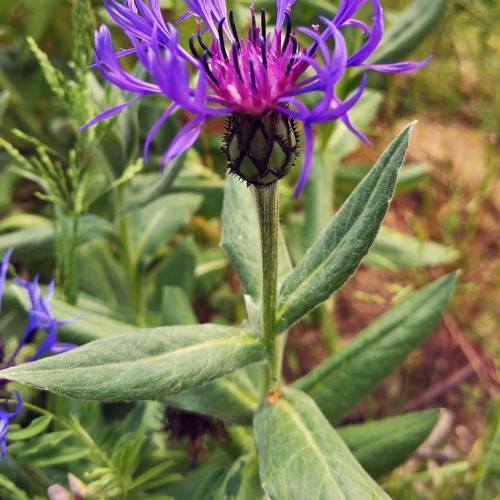
mountain bluet
Centaurea montana
Also Known As - Perennial CornflowerCycle:
Herbaceous Perennial
Watering:
Minimum
Hardiness Zone:
3 - 8
Flowers:
Flowers In Spring
Sun:
Full sun, Part sun/part shade
Soil:
Well-drained
Fruits:
Fruits In Autumn Ready In Summer
Leaf:
Yes
Growth Rate:
Moderate
Maintenance:
Low
Drought Tolerant:
Yes
Salt Tolerant:
Yes
Invasive:
Yes
Care Level:
Medium
watering
Mountain bluets (Centaurea montana) need to be watered on a regular basis, preferably with a deep soaking once a week. However, this should be reduced in summer, as they prefer relatively dry soil during the hot months. If the temperature rises, reduce to a deep soak every 2 weeks; if the foliage begins to discolor or die back, increase watering frequency. Be sure to check soil moisture levels before each watering, as overwatering can cause root rot and other diseases. In winter, keep the soil slightly moist but never soggy.
sunlight
Mountain Bluet (Centaurea montana) is a perennial wildflower that will typically thrive with 6 to 8 hours of sunlight each day. Ideally, the plant should receive direct sunlight in the morning for a few hours, with some partial shade in the afternoon. If the plant is receiving too much direct sunlight, it will suffer from heat stress and should be moved to a location with more shade. Mountain bluet prefers the cooler temperatures of spring and fall and will go into dormancy during the harsh winter conditions.
pruning
Mountain bluet should be pruned in late spring or early summer, after it has finished blooming. Pruning should be kept light—cut back the flower stems to the basal mound of foliage, but leave the foliage to give the plant an unkempt look. Depending on how much control you want the plant to have in terms of keeping it neat, consider removing just the top 1/3 of the stems. This will help keep the plant from overrunning its space. Additionally, any dead, diseased or excessively twiggy stems should be pruned off to ensure the health and vitality of the remainder of the plant.
